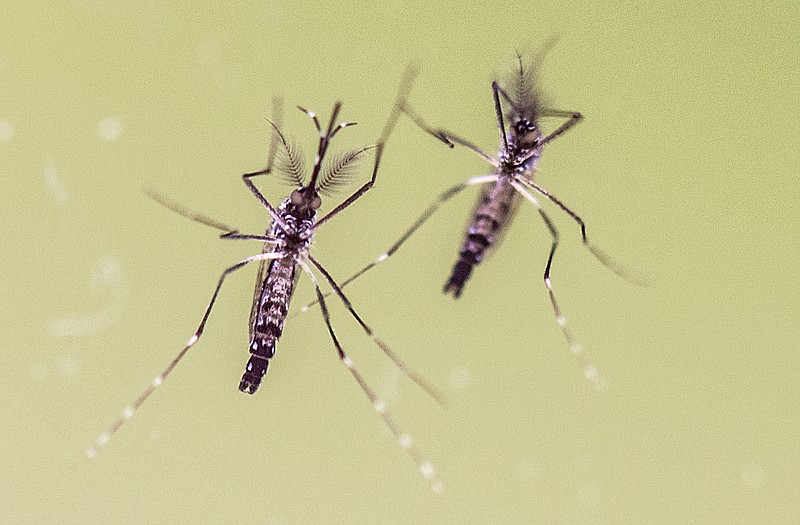AUSTIN-Standing just three matchboxes tall, a new device out of the University of Texas is expected to make surveillance of a mosquito species known for carrying deadly diseases quick and easy.
Researchers created a tool with which users can crush a dead mosquito and add a mixture of chemicals to it. After a half-hour wait, the blend is poured into a small 3D-printed box, where blue LED lights are cast onto it. If the blend glows green, the mosquito belongs to the Aedes aegypti species, which can carry the Zika virus, dengue, chikungunya or yellow fever, research associate Sanchita Bhadra and research educator Tim Riedel said.
Symptoms of Zika, which has affected two people in Texas this year, include joint pain, red eyes, fever and an itchy rash, Texas Department of State Health Services officials said. This year's cases have been travel-related and occurred in Williamson and Collin counties, they said.
Travis County had one Zika case last year and 18 in 2016, state health data show. Statewide, eight Zika cases were reported in 2015, 315 cases in 2016 and 55 cases in 2017.
Right now, the UT researchers' device can only help identify which mosquitoes belong to the Aedes aegypti species and whether a mosquito has come into contact with Wolbachia, bacteria that can help reduce the spread of some diseases. But in the future, researchers want the device to be able to identify whether a mosquito is carrying specific diseases.
The device, which took two years to create, is meant to be friendly enough to be used by anyone, Riedel said.
"Our goal has been always to have this device work in the field without needing too many steps," Bhadra said.
The tool also helps make surveillance of mosquitoes a faster and cheaper experience, she said, so it is easier to anticipate a possible disease outbreak.
"What surveillance allows us to do is basically figure out what is coming," Bhadra said. "We are hoping that our field system would allow surveillance to be done in a much more regular and widespread manner."
Mosquitoes breed more in warmer months, said Department of State Health Services spokesman Chris Van Deusen. They like hanging out in standing water, which state health officials recommend you drain to avoid them.
To prevent mosquito bites, Texans can use an insect repellent that contains DEET, wear long sleeves and pants when the sun is rising and setting, use air conditioning, and put screens on all doors and windows at home, state health officials said.

